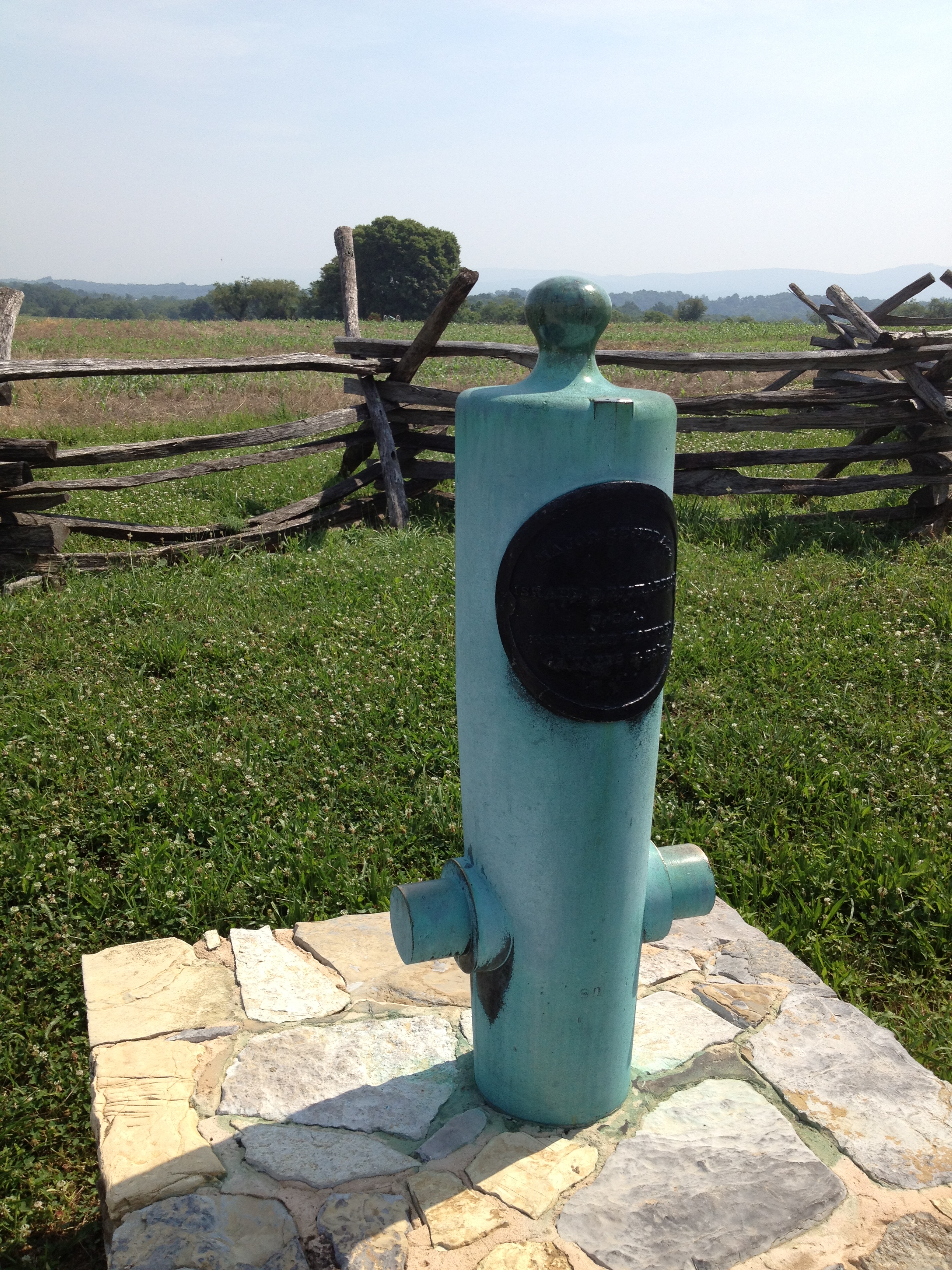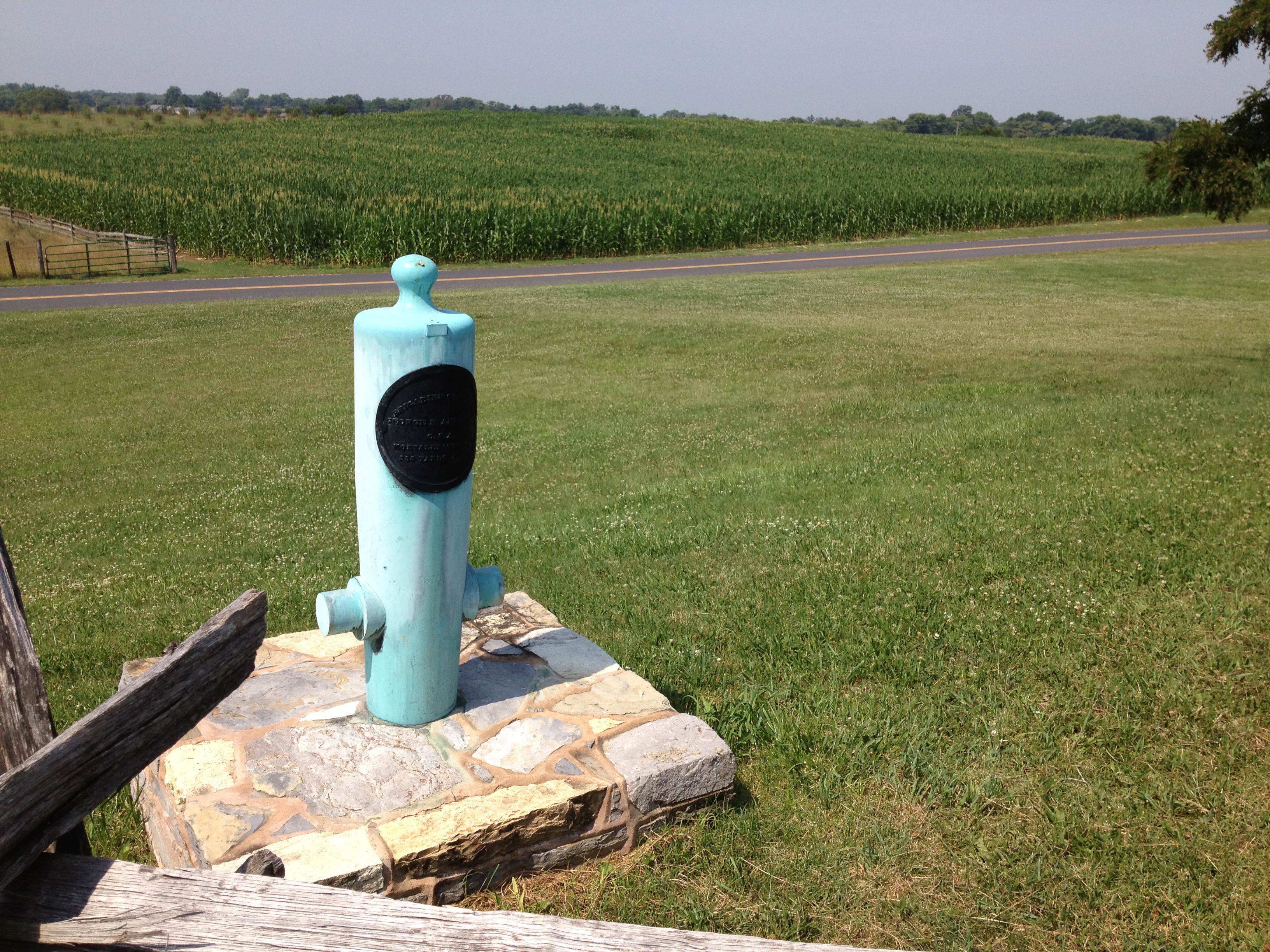The Fallen Generals of Antietam
On September 17, 1862, outside the town of Sharpsburg, Maryland, and along the banks of Antietam Creek, Union and Confederate soldiers fought, bled, and died. That early autumn day is still the bloodiest single day—with 23,000 Americans as casualties—in American history. The majority of the men who fell at Antietam lay in unmarked graves, as is the case with most of the killed at Civil War battlefields. Yet, at Antietam there is an interesting set of monuments that commemorate six men.
These six men who fell that day wore the stars of a general—three wore Southern gray and three wore Union blue. At the approximate location where they were each killed or mortally wounded now stands an upturned canon called a mortuary canon. These cannons, less than six feet tall, including the bases they sit on, list the ranks of the officers, their names, and which side they sacrificed their lives for.
Two of the Union officers who fell were major generals. Joseph King Fenno “K.F.” Mansfield was one of the oldest officers on the field, at age 59. Two days prior to the battle, he was given command of the XII Corps. Leading his men through the East Woods in support of another Federal corps Mansfield was struck in the chest; he died the next day, September 18.

(author collection)
Major General Israel Bush Richardson led a division in the II Corps against Confederate soldiers defending the Sunken Road. He was wounded by fragments of artillery fire but lingered on until November 3, 1862, before he succumbed to his mortal wound.

(author collection)
The last of the three Union officers who were mortally wounded that day was Brigadier General Issac Peace Rodman, who commanded a division in Ambrose Burnside’s Corps that assaulted “Burnside’s Bridge.” On the plains beyond, his division was struck in the counterattack by Confederate General Ambrose “A.P” Hill’s division. Rodman was mortally wounded with a shot through the lungs. He lingered until September 30, when he died.

(courtesy of CT Monuments. net “Connecticut History in Granite and Bronze”)
For the generals wearing gray, the first to fall was Brigadier General William Edwin Starke. Promoted to brigadier general in August 1862, Starke led a counterattack against the Union I Corps when he was struck by three minie balls. He died within the hour.

(author collection)
Brigadier General George Burgwyn Anderson led a brigade of North Carolinians defending the Sunken Road against Union attacks. A West Point graduate in the class of 1852, he was wounded when a minie ball struck him in the ankle joint. Considered a serious but not mortal wound, he was transported to the rear, then to Shepherdstown, Virginia (now West Virginia) and onto Raleigh, North Carolina. The wound became infected, though, and forced doctors to amputate the foot. He died though soon after the surgery, on October 16, 1862.

(author collection)
Arriving in command of a brigade in General A.P. Hill’s Confederate “Light Division” was Brigadier General Lawrence O’Bryan Branch. Although he had been sick during the Second Manassas Campaign, the excitement of the new expedition in Maryland revived his health and thus he was in charge of his brigade when it deployed in the late afternoon at Antietam. From here, two diverging stories about his death unfold: he was either killed by a sharpshooter bullet when conversing with two other Confederate brigade commanders (Maxcy Gregg and James Archer) or he died while leading his brigade. Either way, he was killed outright.

(author collection)
Each of their mortuary canons rests on preserved land, as does the national cemetery where thousands of Union soldiers have their final resting place. Confederate dead from Antietam were reinterred at Washington Confederate Cemetery in Hagerstown, Maryland.
Branch plays a significant role in one of my previous posts on the Battle of New Bern: http://emergingcivilwar.com/2012/07/19/burnsides-rise-the-battle-of-new-bern/!
Love the post!
And at least one “general to be”. Col. George Ward, 15th Mass. Vols., was mortally wounded and brevetted Brig. Gen. before his death.
jno
I have a question about Civil War casualty counts. Based on your post, two of the generals died during the battle and four afterwards. When you read about the dead and wounded at Antietam would all of them be included in the dead or just the two who died during the battle with the other four being listed in the wounded? Btw, I visited the battlefied in July and saw several of the monuments.
Good question Mark!
The four generals would have been listed as “wounded” as would have been who would have not been seen killed or bodies returned prior to the next time roll call was taken. Later, the four generals would have had their designation listed to “deceased” or “killed” with the name of the engagement they suffered the mortal wound from.
I hope this answers your question. Thank you for reading the post and I hope you had a great time in July at the battlefield!
-Phill
When referring to casualties for any civil war battle it always includes, killed, wounded , missing or captured.
Thank you for this site! I live about an hour or so from the battlefield and have visited many times…my most recent trip was just last week with my 14 year old daughter. In my previous 15 visits or so, I have only ever found 5 of the mortuary cannons, always missing General Rodmans! My daughter and I used this site, and the picture with the red house and white barn to clue us in. I can now claim all 6! Thank you for the site and the details about the Generals!